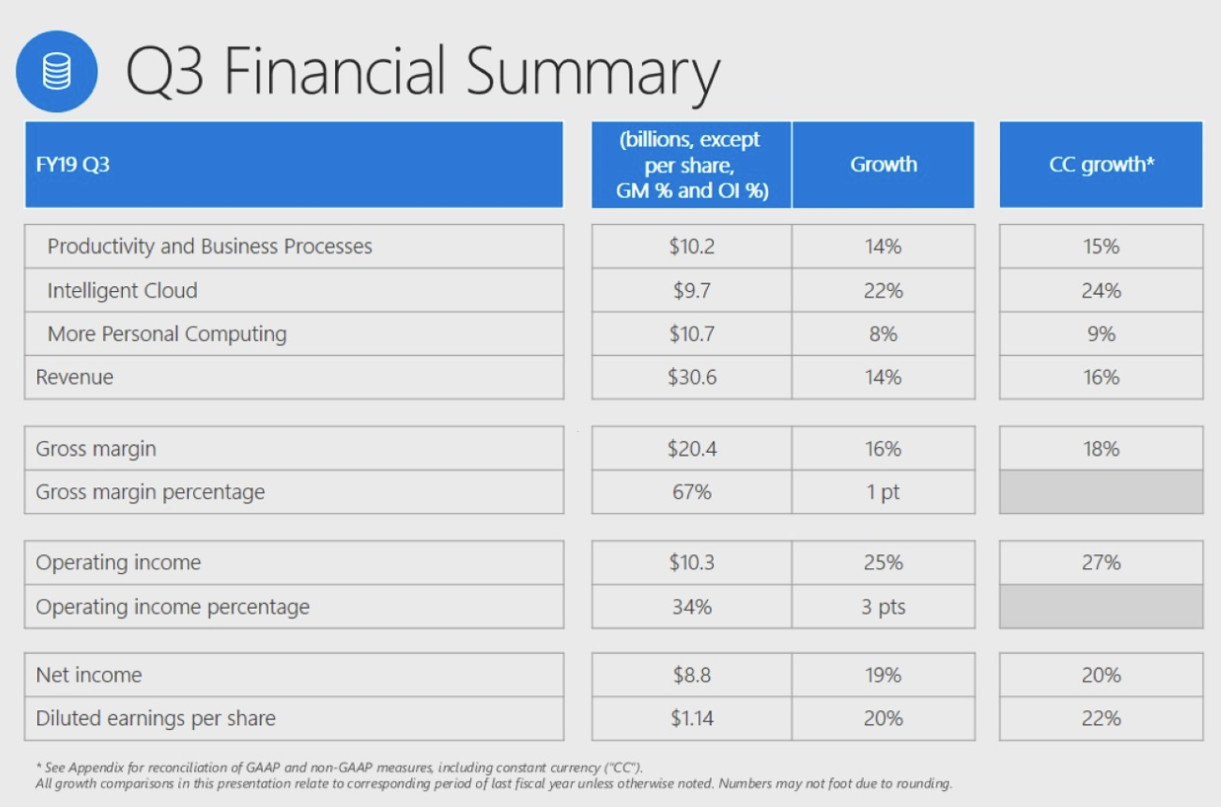Snapchat will let you play as your Bitmoji in video games
Want your video game character to look just like you? Soon you’ll be able to scan an in-game code with Snapchat to play as your personalized Bitmoji avatar on PC, console and mobile games. Today Snapchat announced its new Bitmoji for Games SDK that will let hand-selected partners integrate 3D Bitmoji as a replacement for their character skins. With support for Unity, Unreal and the Play Canvas engine behind Snap’s new Bitmoji Party game inside Snapchat, the SDK should make it easy for developers to pipe in life-like avatars that give people a stronger emotional connection to the game.
“It’s kind of a no-brainer to bring Bitmoji into games. Games can be so much more engaging with you…in the game,” Bitmoji co-founder Ba Blackstock tells me. “We’re adding an identity layer to gaming that has the potential to have a transformational effect on the industry.”
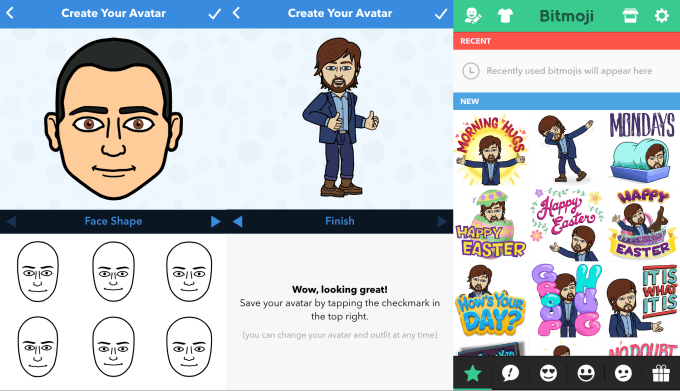
Snapchat has a massive opportunity to colonize the web — and the games ecosystem — with its Bitmoji instead of waiting for developers to make half-assed clones. Bitmoji is perhaps Snapchat’s most popular and enduring feature now that Stories and ephemeral messaging have been widely copied, with 330 million estimated downloads, according to Sensor Tower. As I wrote in my feature piece on Snapchat’s new platform strategy, “To stop copycats, Snapchat shares itself,” every distributed instance of the company drives attention back to its original apps, and each partnership it establishes is one more ally in the fight against Facebook.
Snap’s new CMO
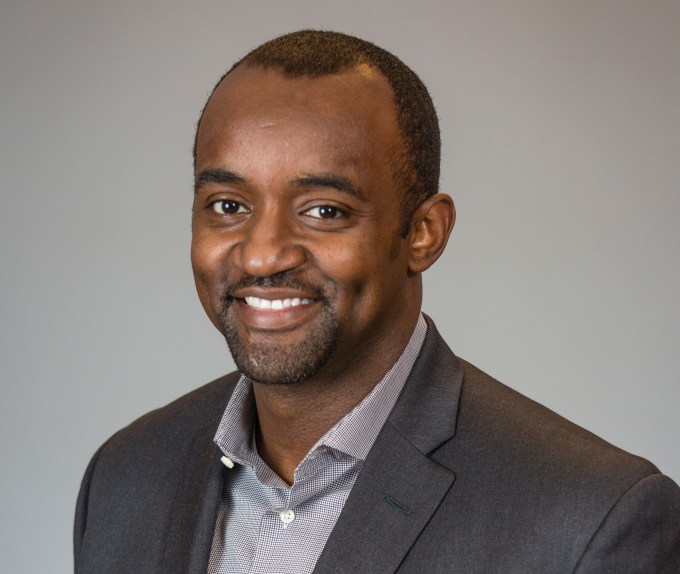
Snap’s new CMO Kenny Mitchell
As Snapchat moves into this new era of marketing itself through Bitmoji, today it also announced it has hired a new CMO, Kenny Mitchell. He was formerly the VP of marketing at McDonald’s and the head of consumer engagement at Gatorade. Mitchell oversaw the sports drink’s Serena Williams tennis game that lived inside a Snapchat ad and saw an average of over 200 seconds of play time, and its viral Super Bowl augmented reality lens that let you dump a cooler of Gatorade on yourself.
“Kenny’s consumer marketing expertise and his deep understanding of our products will be a great combination for Snap,” writes Snap CEO Evan Spiegel.
The company has seen many senior execs depart over the years due to clashes with Spiegel over leadership, so we’ll see if Mitchell sticks around. He’ll be spearheading Snap’s new marketing campaign to reactivate Android users frustrated by its buggy app and bring them back to its newly reengineered version. “I look forward to helping Evan and Snap continue to tell their story to people around the world, and working with my new colleagues as we define the future of the camera and self-expression,” Mitchell writes.

Bitmoji, the visual identity layer
Snap acquired Bitmoji parent Bitstrips in 2016 for just $64 million, propelling it to become a staple top 10 app. Snap launched its Snap Kit platform in June 2018, allowing developers to integrate Bitmoji into the keyboards of their apps like Tinder for use as chat stickers or 2D profile pics. And this month, at Snap’s first Partner Summit, it launched partnerships to bring Bitmoji to the Venmo feed, Fitbit watch faces and more. But now it will let 3D Bitmoji replace your in-game character head-to-toe.
For now, the SDK will be free to top developers chosen for the program from PC, Mac, Xbox, PlayStation, Nintendo Switch, iOS, Android and other platforms. Surprisingly, most game devs just build their own avatar customization feature from scratch, but they’re typically focused on clothes and crazy hairstyles rather than fine-tuning a face that looks like your own. And while customized avatars are common in shooter games, Bitmoji could bring them to platform, racing, dancing, puzzle, fighting and role-playing games too.
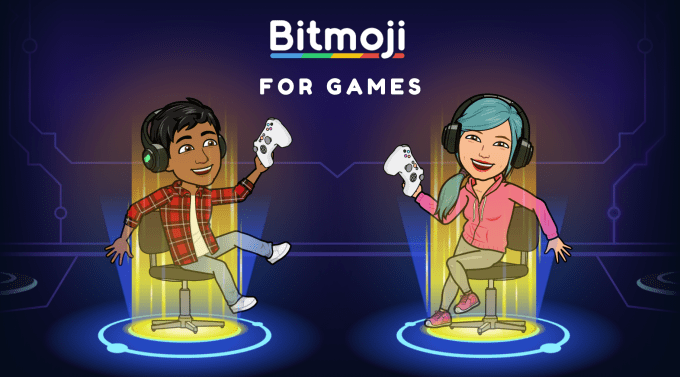
Bitmoji for games won’t be an open platform, to ensure the brand isn’t misused. Blackstock explains that “You can look at what we’re doing with Bitmoji Kit where we have guidelines of best practices of how to use Bitmoji and not use Bitmoji. We’ll apply the same kinds of guidelines to gaming.” That might mean no extra graphically violent games, or anything in which players might revel in inflicting pain on a personalized avatar. But Fortnite, with its cartoony violence, might be an ideal Bitmoji partner.
Snap’s global head of gaming partnerships, John Imah, says he could imagine using his Bitmoji in titles from Star Wars, Lego, Mario Kart or Warcraft. Depending on how their models for characters, landscapes and items work, developers may have to do some work to make Bitmoji work gracefully. But Imah says when it can, “There will be some modification on our end to make sure this works within their engine so we can make this process as seamless as possible for these developers.”
Users will design their avatar in the Bitmoji or Snapchat app, though there may be in-game customization options down the line. If users ask to import their Bitmoji, the game will show a QR Snapcode on screen that users can scan with the Snapchat camera. That authentication unlocks their Bitmoji to use as an avatar skin in the game. Suddenly, every quest, battle and cutscene becomes about them, not some generic character.

Given Fortnite is earning hundreds of millions of dollars selling cosmetic upgrades, the inevitable question is whether Snap will start selling bonus outfits, items or face options for Bitmoji. “It’s really early days for Bitmoji for Games. It’s something we’ll explore later down the road,” Imah tells me. Imagine if kids could buy Supreme sweatshirts or fresh Nikes for their Bitmoji? That could be a lucrative new business for Snap that’s strengthened by each Bitmoji partnership, and at a time when it’s eager to boost revenue and cut losses as it aims for profitability.
Bitmoji for Games could cement Snapchat as the best way to visually represent yourself online without a photograph. As the darker sides of the internet and human nature come into focus for the tech industry, we need more ways to be ourselves while retaining privacy. Bitmoji could deliver the emotional connection of seeing yourself as the hero without the risks of exposing your true face.
Powered by WPeMatico
SalesLoft nabs $70M at around $600M valuation for its sales engagement platform
Artificial intelligence and other tech for automating some of the more repetitive aspects of human jobs continues to be a growing category of software, and today a company that builds tools to address this need for salespeople has raised a tidy sum to grow its business.
SalesLoft, an Atlanta-based startup that has built a platform for salespeople to help them engage with their clients — providing communications tools, supporting data and finally analytics to “coach” salespeople to improve their processes — has raised $70 million in a Series D round of funding led by Insight Partners with participation from HarbourVest.
Kyle Porter, SalesLoft’s co-founder and CEO, would not disclose the amount of funding in an interview, but he did confirm that it is more than double its valuation from the previous round — a $50 million Series C that included LinkedIn among the investors (more on that below) — but less than $1 billion. That round was just over a year ago and would have valued the firm at $250 million. That would put SalesLoft’s current valuation at more than $500 million, and a source close to the company notes that it’s around $600 million.
While there are a number of CRM and sales tools out in the market today, Porter believes that many of the big ones might better be described as “dumb databases or repositories” of information rather than natively aimed at helping source and utilise data more effectively.
“They are not focused on improving how to connect buyers to sales teams in sincere ways,” he said. “And anytime a company like Salesforce has moved into tangential areas like these, they haven’t built from the ground up, but through acquisitions. It’s just hard to move giant aircraft carriers.”
SalesLoft is not the only one that has spotted this opportunity, of course. There are dozens of others that are either competing on single or all aspects of the same services that SalesLoft provides, including the likes of Clari, Chorus.ai, Gong, Conversica, Afiniti and not least Outreach — which is seen as a direct competitor on sales engagement and itself raised $114 million on a $1.1 billion valuation earlier this month.
One of the notable distinctions for SalesLoft is that one of its strategic investors is LinkedIn, which participated in its Series C. Before Microsoft acquired it, LinkedIn was seen as a potential competitor to Salesforce, and many thought that Microsoft’s acquisition was made squarely to help it compete against the CRM giant.
These days, Porter said that his company and LinkedIn have a tight integration by way of LinkedIn’s Sales Navigator product, which SalesLoft users can access and utilise directly within SalesLoft, and they have a hotline to be apprised of and help shape LinkedIn’s API developments. SalesLoft is also increasingly building links into Microsoft Dynamics, the company’s CRM business.
“We are seeing the highest usage in our LinkedIn integration among all the other integrations we provide,” Porter told me. “Our customers find that it’s the third most important behind email and phone calls.” Email, for all its cons, remains the first.
The fact that this is a crowded area of the market does speak to the opportunity and need for something effective, however, and the fact that SalesLoft has grown revenues 100 percent in each of the last two years, according to Porter, makes it a particularly attractive horse to bet on.
“So many software companies build a product to meet a market need and then focus purely on selling. SalesLoft is different. This team is continually innovating, pushing the boundaries, and changing the face of sales,” said Jeff Horing, co-founder and MD of Insight Venture Partners, in a statement. “This is one reason the company’s customers are so devoted to them. We are privileged to partner with this innovative company on their mission to improve selling experiences all over the world.”
Going forward, Porter said that in addition to expanding its footprint globally — recent openings include a new office in London — the company is going to go big on more AI and “intelligence” tools. The company already offers something it calls its “coaching network,” which is not human but AI-based and analyses calls as they happen to provide pointers and feedback after the fact (similar to others like Gong and Chorus, I should note).
“We want to give people a better way to deliver an authentic but ultimately human way to sell,” he said.
Powered by WPeMatico
How to source hard-to-fill programming positions
Contributor
The competition is intense for great tech talent, and it’s even harder to find the most qualified people who are also the right fit for your company
This article shares some practical processes that you can add to your human resources function in order to accelerate the programmer pipeline, based on the years I have spent as a hiring focused software engineer at growing startups and now running my own recruiting firm.
Our recruiting strategy is surprisingly simple, and boils down to optimizing various segments of the sourcing funnel: awareness, pageviews, and application submits.
What ties these tactics together, though, is you, your company, what you’re offering, and how you approach the people you want to hire. If you want to build a strong, diverse team, you need to develop a thoughtful, empathetic and proactive approach before you can optimize.
Within the article we cover:
- The mixed value of tech meetups
- Cold outreach
- Deciding who you’re targeting
- Prospecting through developer sites like Github
- Channels
- LinkedIn (yes) and LinkedIn ads (probably not)
- Reddit ads (yes)
- Craigslist (really, yes)
- Alumni networking
- Techniques for improving conversion rates
In the article’s appendix, I also provide our company’s 2019 checklist process — eighteen steps that we delegate to manage our sourcing process.
Powered by WPeMatico
Despite declines for the quarter, Tesla is bullish on its overall energy business
Even as its solar business declined in step with its overall earnings, Tesla is bullish on the prospects for the energy side of its business over the course of the year.
The energy business is an unheralded part of Tesla — overshadowed by its headline-grabbing (and much larger) auto exploits — that chief executive Elon Musk thinks will generate an increasing share of revenue for the company over time.
Revenues from its solar power and energy storage business fell by 13 percent from the fourth quarter 2018 and 21 percent from a year ago period, down to $324.7 million from $371.5 million in the fourth quarter of 2018 and $410 million in the year ago quarter.
Solar energy deployments fell from 73 megawatts to 47 megawatts from the fourth to the first quarter, the company said. Those figures were offset by a slight increase in solar deployments.
The company actually introduced a new financing and purchasing model for solar installations in the second quarter — saying in its shareholder letter that residential solar customers can buy directly from the Tesla website, in standardized capacity increments.
“We aim to put customers in a position of cash generation after deployment with only a $99 deposit upfront. That way, there should be no reason for anyone not to have solar generation on their roof,” Musk and chief financial officer Zachary Kirkhorn wrote in the shareholder letter.
Tesla’s battery storage business was hit as the company shifted units from energy storage to installation in its own vehicles.
“Energy storage production in the second half of 2018 was limited by cell production as we routed all available Gigafactory 1 cell capacity to supply Model 3,” the company wrote in its letter. “Some Gigafactory 1 cell production has been routed back to the energy storage business, enabling us to increase production in Q1 by roughly 30% compared to the previous quarter.”
And Musk thinks that the energy business will grow significantly over the course of the year. “We hope that growth rate will continue and battery storage will become a bigger and bigger percentage over time,” Musk said on an analyst call following the earnings release. Potentially, Tesla thinks its energy business could grow by as much as 300 percent, Musk said.
Powered by WPeMatico
You might hate it, but Facebook Stories now has 500M users
You might think it’s redundant with Instagram Stories, or just don’t want to see high school friends’ boring lives, but ephemeral Snapchat-style Stories now have 500 million daily users across Facebook and Messenger. WhatsApp’s Stories feature Status has 500 million dailies too, and Instagram hit that milestone three months ago. That’s impressive, because it means one-third of Facebook’s 1.56 billion daily users are posting or watching Stories each day, up from zero when Facebook launched the feature two years ago.
For reference, Stories inventor Snapchat has just 190 million total daily users.
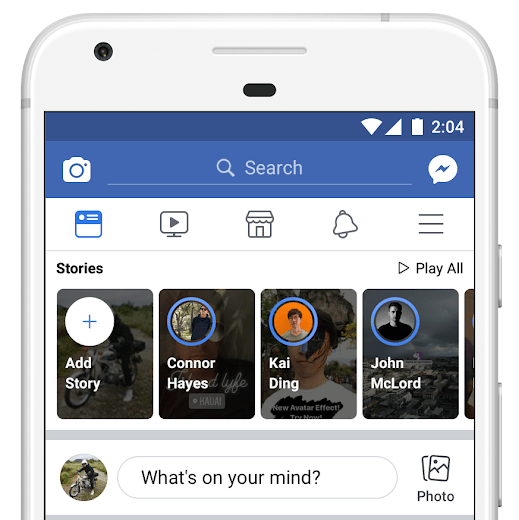
Facebook Stories
CEO Mark Zuckerberg announced the new stats on today’s Facebook Q1 2019 earnings call, which showed it’s user growth rate had increased but it had to save $3 billion for a potential FTC fine over privacy practices.
Facebook isn’t just using Stories to keep people engaged, but to squeeze more cash out of them. Today COO Sheryl Sandberg announced that 3 million advertisers have now bought Stories ads across Facebook’s family of apps. I’d expect Facebook to launch a Stories Ad Network soon so other apps can show Facebook’s vertical video ads and get a cut of the revenue.

Facebook’s aggressive move to clone Snapchat Stories not just in Instagram but everywhere might have pissed users off at first, but many of them have come around. If you give people a place to put their face at the top of their friends’ phones, they’ll fill it. And if someone dangles a window into the lives of people you know and people you wish you did, you’ll open that window regularly.
Powered by WPeMatico
Samsung Galaxy Fold review: future shock
The Galaxy Fold has been the most polarizing product I can recall having reviewed. Everyone who saw it wanted to play with the long-promised smartphone paradigm shift. The results, on the other hand, were far more mixed.
If nothing else, the Fold has a remarkably high Q-Rating. Each person who saw me using the product had at least a vague idea of what it was all about. I honestly can’t remember the last time I’ve had that reaction with a non-iPhone device. That’s great from brand perspective. It means a lot of people are curious and potentially open to the notion that the Samsung Galaxy Fold is the future.
Of course, it also means there are a lot of people looking on if you fail.
In some ways, this past week with the Samsung Galaxy Fold has been an extremely public beta. A handful of samples were given out to reviewers. Most worked fine (mine included), but at least three failed. It’s what we in the industry call a “PR nightmare.” Or at least it would be for most companies.
Samsung’s weathered larger storms — most notably with the Galaxy Note 7 a few years back. Of course, that device made it much further along, ultimately resulting in two large-scale recalls. The nature of the two issues was also vastly different. A malfunctioning screen doesn’t put the user at bodily risk like an exploding battery. The optics on these things don’t get much worse than having your smartphone banned from planes.
As of this writing, the Fold is still set to go on sale, most likely this year. To be perfectly frank, the April 26 release date seemed overly optimistic well before the first reports of malfunctioning units. It’s never a great sign when a device is announced in February and is only made available for review a few weeks ahead of launch. It’s kind of like when a studio doesn’t let reviewers watch a film before release. It doesn’t necessarily mean it’s bad, but it’s something to keep an eye on.
That’s the thing. The Galaxy Fold is the kind of device you want badly to succeed. You want it to be great and you want Samsung to sell a billion because it’s a genuinely exciting product after a decade of phones that look mostly the same. There’s also the fact that Samsung has essentially been hyping this thing for eight years, since it debuted a flexible display at CES 2011.
In spite of that, however, the home stretch feels rushed. Samsung no doubt saw the writing on the wall, as companies like Huawei readied their own foldable. And while Royole beat the fold to market, Samsung still had a very good shot at the claim of first commercially viable foldable on the market, with a decade of Galaxy devices under its belt and hand-in-hand work with the Google team to create an Android UX that makes sense on a pair of very different screens.

[Source: iFixit]
But this iFixit teardown speaks volumes. “Alarmingly” isn’t the kind of word you want/expect to hear about a company like Samsung, but there it is, followed directly by “fragile” — itself repeated five times over the course of the write-up. iFixit’s findings match up pretty closely with Samsung’s own reports:
- A fragile display means knocking it the wrong way can result in disaster.
- A gap in the hinges allows dirt and other particles to wedge themselves between the folding mechanism and screen.
- Don’t peel off the protective layer. I know it looks like you should, but this is probably the easiest way to wreck your $2,000 phone that doesn’t involve a firearm or blender.
What makes all of this doubly unfortunate is that Samsung has about as much experience as anyone making a rugged phone that works. I feel confident that the company will do just that in future generations, but unless the company can come back with definitive evidence that it’s overhauled the product ahead of launch, this is a difficult product to recommend.
Samsung knew the first-gen Galaxy Fold would be a hard sell, of course. The company was pretty transparent about the fact that the experimental form factor, coupled with the $1,980 price tag, meant the device will only appeal to a small segment of early adopters.

Even so, the company managed to sell out of preorders — though it didn’t say how large that initial run was. Nor are we sure how many users have canceled in the wake of this past week’s events. Certainly no one would blame them for doing so at this point.
But while the apocalyptic shit-posters among us will declare the death of the foldable before it was ever truly born, whatever doesn’t kill Samsung has only made it stronger. And this misfire could ultimately do that for both the company and the category, courtesy of its informal beta testing.
Rewind a mere week or so ago (seriously, it’s only been that long), when we finally got our hands on the Galaxy Fold. I was impressed. And I certainly wasn’t alone. Admittedly, there’s a bit of a glow that first time you see a device that’s seemingly been teased forever. The fact that it exists feels like a kind of victory in and of itself. But the Fold does an admirable job marrying Samsung’s hardware expertise with a new form factor. And more importantly, it’s real and works as advertised — well, mostly, at least.
The truth is, I’ve mostly enjoyed my time with the Galaxy Fold. And indeed, it’s been fun chronicling it on a (nearly) daily basis. There are some things the form factor is great for — like looking at Google Maps or propping it up to watch YouTube videos on the elliptical machine at the gym. There are others when the bulky form factor left me wanting to go back to my regular old smartphone — but those trade-offs are to be expected.

I both like the Fold’s design and understand the criticism. Samsung’s done a good job maintaining the Galaxy line’s iconic design language. The foldable looks right at home alongside the S and Note. That said, the rounded backing adds some bulk to the product. And while open, the device is thinner than an iPhone, when folded, it’s more than double the thickness, owing to a gap between the displays. It’s quite skinny in this mode, however, so it should slip nicely into all but the tightest pants pockets.
In practice, the folding mechanism might be the most impressive part of the product. The inside features several interlocking gears that allow the product to open and shut with ease and let users interact with the device at various states of unfold. I found myself using the device with it open at a 90-degree angle quite a bit, resting in my hand like an open book. The Fold features a pair of magnets on its edges, which let you close it with a satisfying snap. It’s weirdly therapeutic.
Really, the biggest strike against the device from a purely aesthetic standpoint is that it’s not the Mate X. Announced by Huawei a few days after the Fold’s big unveil, the device takes a decidedly more minimalist approach to the category. It’s an elegant design that features less device and more screen, and, honestly, the kind of thing I don’t think most of us expected until at least the second-generation product.
The gulf between the two devices is especially apparent when it comes to the front screen. The front of the screen is around two-fifths bezel, leaving room for a 4.6-inch display with an awkward aspect ratio. The Mate X, meanwhile, features a 6.6-inch front-facing AND 6.4-inch rear-facing display (not to mention the larger eight-inch internal display to the Fold’s 7.3).
There’s reason to recommend the Fold over the Mate X, as well. I can’t speak to the difference in user experience, having only briefly interacted with the Huawei, but the price point is a biggie. The Mate X starts at an even more absurd $2,600, thanks in part to the fact that it will only be available in a 5G version, adding another layer of niche.
That price, mind you, is converted from euros, because 1) The product was announced at MWC in Barcelona and 2) U.S. availability is likely to be a nonstarter again, as the company continues to struggle with U.S. regulators.
Of course, the Fold’s U.S. availability is also in limbo at the moment, albeit for very different reasons.
I ultimately spent little time interacting with the front screen. It’s good for checking notifications and the like, but attempting to type on that skinny screen is close to impossible, with shades of the new Palm device, which implements its own shortcuts to get around those shortcomings. The inside, meanwhile, takes a butterfly keyboard approach, so you can type with both thumbs while holding it open like a book.

There’s also the issue of app optimization. A lot of this can be chalked up to an early version of a first-gen device. But as with every new device, the equation of how much developer time to invest is largely dependent on product adoption. If the Fold and future Fold’s aren’t a success, developers are going to be far less inclined to invest the hours.
This is most painfully obvious when it comes to App Continuity, one of the device’s primary selling points from a software perspective. When working as advertised, it makes a compelling case for the dual screens. Open something on the front and expand your canvas by unfolding the device. Google is among the companies that worked directly with Samsung to optimize apps this way, and it’s particularly handy with Maps. I used it a fair amount on my trip last week to Berkeley (shout out to the fine people at Pegasus Books on Shattuck).
When an app isn’t optimized, Samsung compels you to restart it, or else you get a nasty case of letterbox bars that retain the aspect ratio of the front screen. Continuity isn’t designed to work the other way, either — opening something on the large screen and then transferring to the front. That’s a bit trickier, as shutting the phone is designed to offer a kind of finality to that session, like hitting the power button to put the device to sleep.

I get that, and like many other pieces here, it will be interesting to see how people utilize it. Aside from the obvious hardware concerns, much of the work on the second-generation device will center around learnings from how users interact with this model. I know I surprised myself when I ended up using the 7.3-inch screen to snap photos. It felt silly — like those people who bring iPads to photograph events. But it’s ultimately a much better viewfinder than that measly 4.6-incher.
That’s really just the tip of the iceberg for the inside screen, of course. The size, which is somewhere between phablet and mini tablet, provides ample real estate that can still be held in one hand. It’s a great size for short videos. I’ve watched a lot of YouTube on this thing, though the speakers (a small series of holes on the upper and lower edges) leave a lot to be desired.
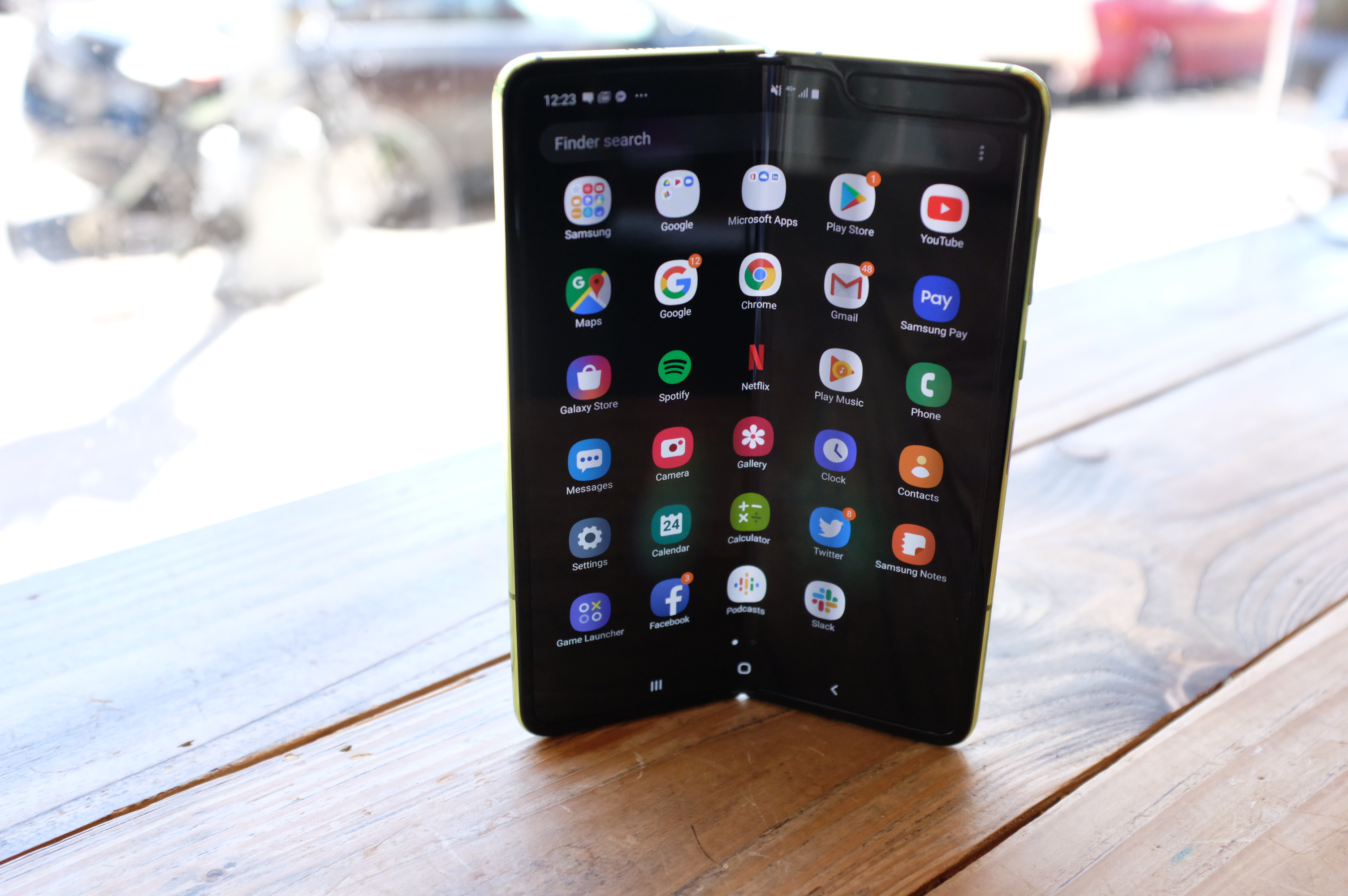
And the seam. I found myself uttering the phrase “it could be worse” a lot. Like so much of the general aesthetic (including the odd green-gold color of my Fold’s casing), it’s lighting-dependent. There are plenty of times when you don’t see it all, and other when the glare hits it and makes it look like a line right down the center.
I realized after snapping a couple of photos that it’s particularly apparent in many shots. That probably gives a false impression of its prominence. It sucks that there’s one at all, but it’s not a surprise, given the nature of the design. You mostly don’t notice it, until your finger swipes across it. And even then it’s subtle and totally not a dealbreaker, unlike, say, the massive gap that made the ZTE Axon M look like two phones pasted together.
I love the ability to stand the device up by having it open at a 90-degree angle, so I can watch videos while brushing my teeth. But this orientation blocks the bottom speakers, hampering the already iffy sound. Thankfully, your $1,980 will get you a pair of the excellent Galaxy Buds in box. It’s hard to imagine Apple bundling AirPods with the next iPhone, but I guess stranger things have happened, right?
Multi-Active Window is the other key software piece. It’s something that has been available on other Samsung devices and certainly makes sense here. Open an app, swipe left from the right side of the screen and a tray will open. From there, you can open up to three apps on the display. Once open, the windows feature a small tab at the top that lets you rearrange them.
It’s handy. I used it the most during those times I had a video playing on an exercise machine, so I didn’t have to close out of everything to check emails and Twitter. I’m a gym multi-tasker. I’m sorry, it’s just who I am now.

It worked quite well on the whole, courtesy of robust internals, including 12GB of RAM and a Snapdragon 855. The primary issue I ran into was how some of the apps maintained that half-screen format after I closed out and reopened. I’m sure some people will prefer that, and I’m honestly not sure what the ideal solution is there.
The Fold’s also got a beefy battery on board. Like Huawei’s, it’s split in two — one on either side of the fold. They work out to a beefy 4,380 mAh. That’s just slightly less than Huawei’s 4,500, but again, the Mate X is 5G by default — which means it’s going to burn through mAhs at a faster rate.
Ultimately, the Fold’s greatest strength is Samsung itself. I understand why you probably just did a double take there in the wake of the company’s latest hardware scandal, but the fact is that the company knows how to build phones. The Fold was very much built atop the foundation of the successful Galaxy line, even while it presents a curious little fork in the family tree.
That means a solid and well-thought-out user experience outside of the whole fold thing.
That list includes great cameras with excellent software features and clever tricks like the new Wireless PowerShare, which lets you fold up the phone and charge up those Galaxy Buds or another phone while it’s plugged in. For better or worse, it also includes Bixby. Our model was a European version that didn’t have the full version, but I think I’ve made my thoughts on the smart assistant pretty well known over the last couple of years.
The devoted Bixby button is very much here. And yes, I very much accidentally pressed it a whole bunch. The headphone jack, on the other hand, is conspicuously absent, which is no doubt a big driver behind the decision to include Galaxy Buds. The Fold is an anomaly in a number of ways, but it’s hard to shake the feeling that this might finally represent the beginning of the end for the port on Samsung’s premium devices.

Also absent is the S Pen. The stylus began life on the Note line and has since branched out to other Samsung devices. I suspect the company would have had a tough time squeezing in space for it alongside the dual batteries, and maybe it’s saving something for future generations, but this does feel like the ideal screen size for that accessory.
I’m parting ways with the Fold this week, per Samsung’s instructions. Unlike other products, giving it up won’t feel that tough. There wasn’t a point in the past week when the Fold didn’t feel like overkill. There were, however, times when my iPhone XS screen felt downright tiny after switching back.
In many ways, the foldable phone still feels like the future, and the Fold feels like a stop along the way. There are a lot of first-gen issues that should be/should have been hammered out before mass producing this device. That said, there are certain aspects that can only really be figured out in real-world testing. Take the fact that Samsung subjected the device to 200,000 mechanical open and closes. That’s a lot, and probably more than the life of just about any of these devices, but people don’t open and close like machines. And when it comes to the screen, well, a little dirt is bound to get between the gears, both metaphorically and literally.
As I close this Galaxy Fold a final time, it seems safe to say that the device represents a potentially exciting future for a stagnant smartphone space. But that’s the thing about the future — it’s just not here yet.
Powered by WPeMatico
Slack to extend collaboration to folks who don’t want to give up email
As Slack gathered with its growing customer base this week at the Frontiers Conference in San Francisco, it announced several enhancements to the product, including extending collaboration to folks who want to stick with email instead of hanging with their co-workers in Slack .
Some habits are tough to break, and using email as your file-sharing and collaboration tool is one of them. Email is great for certain types of communications, but it was never really designed to be a full-fledged communications tool. While a tool like Slack might not ever fully replace email, it is going after it hard.
But Andy Pflaum, director of project management at Slack, says rather than fight those folks, Slack decided to make it easier to include them, with a new email and calendar bridge that enables team members who might not have made the leap to Slack to continue to be kept in the loop.
Instead of opening Slack and seeing the thread, the message will come to these stragglers in their trusty old email inbox, just the way they like it. Earlier this month the company announced tighter integration between Slack and Outlook calendar and email (building on a similar integration with Gmail and Google Calendar), where emails and calendar entries can be shared inside Slack. Pflaum says that the company is trying to take that email and calendar bridge idea one step further.
The non-Slack users would get an email instead with the Slack thread. It bundles together multiple responses to a thread in which the person has been engaging in an email, so the recipient isn’t getting an email for every response, according to Pflaum.
The person can respond by clicking a Slack button in the email and having Slack open, or they can simply reply to the email and the response will go to Slack automatically. If they choose the former, it might be a sneaky way to get them used to using Slack instead of email, but Pflaum says that it is not necessarily the intent.
Slack is simply responding to a request by customers to have this ability because apparently there are a percentage of people who would prefer to continue working inside email. The ability to open Slack to reply will be available soon. The ability to reply to Slack with the Reply button will be available later this year.
Powered by WPeMatico
Microsoft beats expectations with $30.6B in revenue as Azure’s growth continues
Microsoft reported its quarterly earnings for Q3 2019 today. Overall, Wall Street expected earnings of about $1 per share and revenue of $29.84 billion. The company handily beat this with revenue of $30.6 billion (up 14 percent from the year-ago quarter) and earnings per share of $1.14.
With Microsoft focusing heavily on its cloud business, with both Azure and its other cloud-based services, it’s no surprise that this is also what Wall Street really cares about. The expectation here, according to some analysts, was that the company’s overall commercial cloud business would hit a run rate of about $38.5 billion. Those analysts we’re off by only a tiny bit. Microsoft today reported that its commercial cloud run-rate hit $38.4 billion.
And indeed, Microsoft Azure had a pretty good quarter, with revenue growing 73 percent. That’s a bit lower than last quarter’s results, but only by a fraction, and shows that there is plenty of growth left for Microsoft’s cloud infrastructure business.
Azure’s growth slowed somewhat in recent quarters. In some ways, that’s to be expected, though. Microsoft’s cloud is now a massive business, and posting 100 percent growth when you have a run rate of almost $40 billion becomes a bit harder.
“Demand for our cloud offerings drove commercial cloud revenue to $9.6 billion this quarter, up 41 percent year-over-year,” said Amy Hood, executive vice president and chief financial officer of Microsoft. “We continue to drive growth in revenue and operating income with consistent execution from our sales teams and partners and targeted strategic investments.”
The company’s “intelligent cloud” segment, which includes Azure and other cloud- and server-based products, reported revenue of $9.7 billion, up 22 percent from the year-ago quarter.
Microsoft’s productivity applications also fared well, with total revenue up by 14 percent to $10.2 billion. Here, revenue from LinkedIn also increased by 27 percent and the company highlighted that LinkedIn sessions also increased 24 percent.
Other highlights of the report include an increase in Surface revenue of 21 percent, which was expected, given the number of new devices the company released in recent quarters.
“Leading organizations of every size in every industry trust the Microsoft cloud. We are accelerating our innovation across the cloud and edge so our customers can build the digital capability increasingly required to compete and grow,” said Satya Nadella, CEO of Microsoft.
For more financial details, you can find the full report here.
Powered by WPeMatico
Facebook reserves $3B for FTC fine, but keeps growing with 2.38B users in Q1
A massive penalty hangs over Facebook’s head, but it otherwise had a very strong Q1 earnings report. Facebook reached 2.38 billion monthly users, up 2.5 percent from 2.32 billion in Q4 2018 when it grew 2.2 percent, and it now has 1.56 billion daily active users, up 2.63 percent from 1.52 billion last quarter when it grew 2 percent. Facebook pulled in $15.08 in revenue, up 26 percent year-over-year compared to Refinitiv’s consensus estimates of $14.98 billion in revenue.
Facebook recorded earnings per share of $0.85 compared to estimates of $1.63 EPS. However, that’s because Facebook has set aside $3 billion to cover a potential FTC fine that it’s still resolving. Without that fine, it would have had an EPS of $1.89. Despite the set-aside, Facebook still earned $2.429 billion in profit, though that’s down from $4.988 a year ago and $6.8 billion in Q4 2018.

Facebook’s share price rose 8.3 percent to $197.84 after closing before earnings at $182.58, way up from its recent low of $124.06 in December. Wall Street seems to have already priced in the potential FTC fine. Facebook has agreed to strict oversight of how it handled user privacy in a 2011 deal with the FTC. It promised to not misrepresent its privacy practices or change privacy controls without user permission, and it’s now negotiating the fine for potentially breaking those terms.
Facebook wrote in its earnings release about the FTC fine that:
“In the first quarter of 2019, we reasonably estimated a probable loss and recorded an accrual of $3.0 billion in connection with the inquiry of the FTC into our platform and user data practices, which accrual is included in accrued expenses and other current liabilities on our condensed consolidated balance sheet. We estimate that the range of loss in this matter is $3.0 billion to $5.0 billion. The matter remains unresolved, and there can be no assurance as to the timing or the terms of any final outcome.”
It’s possible Facebook escapes with a lesser fine that would likely still dwarf Google’s $22.5 million penalty for violating an FTC privacy deal. But it also might have to drag down a future quarter of earnings if the fine ranges as high as $5 billion or larger. Though Facebook does have $45.2 billion in cash and securities on hand to pay that fine and make any necessary acquisitions. Facebook’s headcount grew 36% year-over-year to 37,773 as it staffs up its security team, but it still has a 22 percent operating margin.

Facebook has managed to hold on to its 66 percent daily to monthly user ratio, showing people aren’t necessarily using it less despite all the backlash. It added 39 million daily users, compared to Snapchat’s addition of 4 million in Q1. But Facebook failed to grow past its 186 million daily user count in the US & Canada where it got stuck last quarter, but at least it added 4 million in its lucrative Europe market, plus it had atypically large gains in Asia-Pacific and the Rest Of World regions. As for monetization, Facebook made modest gains in average revenue per user across markets compared to Q3 2018 (excluding the holiday-laden Q4). Europe did especially well, growing ARPU 8.2 percent.
Zooming out, Facebook now has over 2.7 billion total mothly users across its family of Facebook, Messenger, Instagram, and WhatsApp, the same as last quarter. 2.1 billion people use at least one of those apps daily, up from 2 billion last quarter. Instagram Stories, WhatsApp Status, and Facebook Stories on Facebook and Messenger combined each now have 500 million daily users. Facebook also now has 3 million advertisers buying Stories ads across its apps, so the ephemeral format will likely start to contribute meaningful revenue soon.
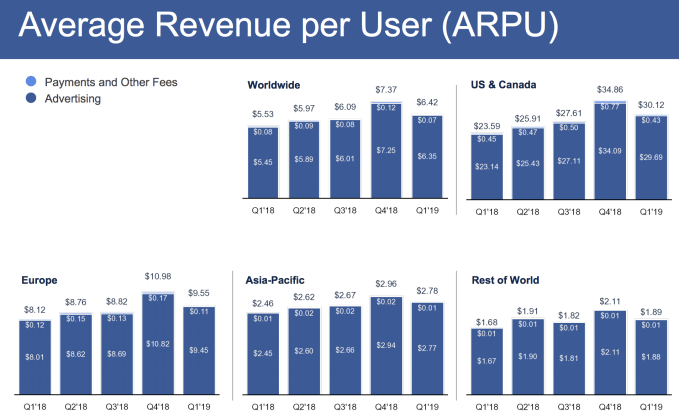
Color From The Earnings Call
In March, Zuckerberg announced plans for a massive privacy-centric overhaul of Facebook to turn it from just a townsquare into also a “living room”. That means unifying its messaging apps with a backend that supports end-to-end encryption, and promoting ephemerality in content sharing and communication. That could help deter calls for regulation, make Facebook harder to break up, and help it stay ahead of competitors like Snapchat, but will also be a massive product and engineering undertaking.
Today, Zuckerberg focused on providing more details to this plan to expand privacy, encryption, impermanence, safety, interoperability, and secure data storage. He stressed that given people traditionally spend more time communicating and consuming content privately than publicly, strengthening Facebook’s “living room” could boost its business. Zuckerberg noted that since Facebook already doesn’t use messaging content for ad targeting and recent content is more useful for its business, encryption and impermanence shouldn’t be a big risk either. Refusing to store data in countries with poor records of privacy could lead to Facebook being banned there, which Zuckerberg admitted is a major business threat, but one it’s grappled with over content policies for years.
In fact, impermanence is already earning money for Facebook. It said that Instagram Stories was the greatest contributor of additional ad impressions this quarter. And while the Facebook and Instagram feeds are already jammed full of ads with little room for more, Facebook says there’s still room to significantly increase Instagram Stories ad load.

Another highlight of the call was Zuckerberg’s discussion of Facebook’s payments strategy. He confirmed that Facebook plans to build out ways for people to pay merchants through its messaging apps. “So I think that what we’re going to end up seeing is building out payments, which is going to end up being something that we do country by country . . . The goal is to have something where you could do discovery through the broader townsquare-like platforms like Instagram and Facebook, and then you can complete the transactions and follow up with businesses individually and have an ongoing relationship through Messenger and WhatsApp.”
This is the first earnings report of a full quarter following Facebook’s worst-ever security breach in September that impacted 50 million users, shaking confidence in the social network’s privacy and security. It’s also the first full quarter in which Facebook sold its own branded hardware — its Portal video chat device that was well received by critics except for the fact that it was made by Facebook.
Yet the defining story continues to be Facebook’s struggle with claims that its user research and developer platform efforts endangered user privacy and steamrolled competitors in search of growth. That includes TechCrunch’s big scoop that Facebook was paying teens to snoop on their data with a VPN app, which eventually led Facebook to shut down its Onavo user surveillance apps. The fact that Facebook isn’t losing massive numbers of users after years of sustained scandals is a testament to how deeply it’s woven itself into people’s lives.
Powered by WPeMatico
Robotics VCs on what’s real, what’s coming, and what to keep in mind
Last week, at TechCrunch’s robotics event at UC Berkeley, we sat down with four VCs who are making a range of bets on robotics companies, from drone technologies to robots whose immediate applications aren’t yet clear. Featuring Peter Barrett of Playground Global, Helen Liang of FoundersX Ventures, Eric Migicovsky of Y Combinator and Andy Wheeler of GV (pictured above), we covered a lot of terrain (no pun intended), including whether last-mile delivery robots make sense and how much robots should be expected to do without human intervention.
We also discussed climate change and how it factors into their bets, and why the many private enterprises focused on creating fully automated vehicles may need to do much more to empower the cities in which they plan to operate. You can find excerpts of our talk below. And for access to the full transcript, become a member of Extra Crunch. Learn more and try it for free.
TC: How do you think about investing in the here and now, versus the future (which is complicated for VCs, given that venture funds need to produce returns within a ten-year window, typically):
PB: One of the challenges with investing in robotics is that robotics companies do tend to take a lot longer to mature than your average enterprise SaaS company. There are some classes of investments that we know the technology works; it’s just a question of commercializing it and bringing it to market, and Canvas [a Playground-backed company that makes autonomous warehouse carts and was just acquired by Amazon] did an extraordinary job of finding a market that existed and had technology in hand that would solve that problem.
There’s other stuff like the amazing work that the folks are doing at Agility [Robotics] with a biped that can operate for many hours in unstructured human environments that today is really, candidly, a research robot, and to reach its long-term aspirations, there’s a whole other set of technologies that we’ll need to develop as the company matures.
We think about blending the stuff that’s very impactful but is going to take a long time because it’s fundamentally a new science and technology that needs to be created, [with] immediate applications of technologies that are proven today, that we’re deploying against real markets.
AW: As for whether we try to build a portfolio where there are exits at different stages, generally, when I’m looking to invest in a robotics thing, I understand that the timeframes can be fairly long, and so what we’re looking for are things that really are going to be very large opportunities — that can generate billion-dollar-plus exits.
TC: A growing number of small last-mile delivery robots has attracted funding. Helen, your firm is an investor in one of these startups, Robby. What’s the appeal?
HL: We look at where we see a pain point in the market. During our team meetings on Fridays, we always use DoorDash. It feels awkward when we order a $100 meal, and the delivery person has driven a long way. We’ll give him a $15, but it’s still [tricky for that person] in terms of economics. If you have a central station for the food delivery, and robots can handle that last-mile delivery, we think that’s a more cost-effective approach.
Robby has partnered with PepsiCo [to delivering snacks to students attending the University of the Pacific in Stockton, Ca.] that makes it more like a vending machine, and we think that’s an interesting market, too. We’ll see how fast adoption will happen.
EM: YC is an investor in Robby as well, and we think of this as kind of the perfect example of how hackers can get into a fairly complex industry. When you look at some robotics and specifically autonomous vehicles, you see extremely large investments going into some of the some of the big players, but then at the same time, you see groups and hackers that are able to use off-the-shelf technology to solve real problems that affect businesses or people, and build services or products that that are valuable. We’ve seen this over and over.
You don’t have to be looking for a large VC investment to compete in the space. It is possible to stay frugal stay nimble and build something on a small scale to demonstrate that you found a problem that people are willing to pay money to solve. Then, if you’re interested, [you can] pursue larger VC investment or not. It’s kind of open right now.
TC: VCs we’ve talked with in the past have suggested that in robotics, they often see cool ideas for which there isn’t necessarily a market or big market need. Is this also your experience?
PB: This is a common pattern where there was some mechanism, some capability of the robot, some feat of dexterity or something [and founders think, ‘That’s really cool, I’m going to make a company out of it.’ But we think about it in terms of, what do you want from the robots? What’s the outcome that everybody agrees is worthwhile? And then, how do you find and build companies to achieve those goals?
One thing we’re struggling with right now is that there’s no real hardware or software platforms. You think about 10 years hence [and] the kinds of things we’ll be investing in, [and it’s] robotics applications that are aggregates of neural networks and some explicit software bound together in some form that can be delivered, so a large enterprise can use an application and not have everybody start from first principles. Because right now, when you built a robotics application, you make all the hardware, you make all the software. All the intellectual and actual capital [money] gets dissipated, building and rebuilding those same things. So robotics applications over time will be investable, much more like the way we invest in software, and that will allow smaller units of creativity to produce useful products.
TC: Andy, how long do you think it’s going to take until we get there?
AW: I think I think we’re making we’re making steady progress on that front. To your earlier question, this space has a lot of folks that are building technology a bit in search of a problem. That’s a common thing in startups generally. I would encourage everybody who’s looking to build a startup in the space is to really find a burning business problem. In the course of solving those [problems], people will build these platforms that Peter was talking about, and we’ll eventually get there in terms of [founders] just having to focus on the application layer.
TC: There are so many buckets: delivery robots, self-driving trucks. Both relate in ways to the overarching problem for our age, which is climate change. How much do you factor climate change into the investing decisions that you make?
PB: When we look at applications and robotics in agricultural, a lot of [our questions are] around how do you deal with a minimum carbon footprint, [and] how you replace workers who are missing. And dealing with climate change will be increasingly be a central thought in what we want from our robots. [After all] what we want from them is the ability to maintain or improve the lifestyles we have without further unwinding the environment.
TC: We talked backstage, and you think we are over-indexing on autonomy as the answer.
PB: When we think about autonomy, it’s not clear how autonomy helps cities. . . There are absolutely applications for autonomy, [including] on a farm or in a logistics environment. I think we still really don’t know how to do Level 5 [which is complete automation, requiring zero human assistance]. And I don’t think we know whether it’s exponentially hard or asymptotically. I think it’s decades before there’s any significant Level 5.
[In the meantime, if] we cared about safety, we’d install roundabouts or lower the blood alcohol limit and not try and make a sentient vehicle that drives on the road the way we do, right?
I’d much rather see having the city collaborate with the vehicles and instrument the city to collaborate with clever vehicles for the benefit of everybody who lives there. But that’s not Level 5 autonomy as the way we think of it
EM: It’s slightly interesting that autonomous vehicles, specifically the individual passenger car, evolved in America, because it’s one of the countries that has the least public transport per capita. And that that’s one of the things that the industry has to acknowledge — that there are other options that can be blended into the transport solutions for cities.
It seems like it might be happening because it’s something that an individual can take somewhat control over. You can’t own a bus, but you can own or [rent] a self-driving car.
PB: Or [an electric] scooter or a bike, right. The future of mobility is going to be a blending of all of these things. But not taking advantage of a logistics platform in a city means you’re kind of doing it the hard way, trying to make a robot to have all the human priors required to drive safely. And it’s just not clear that we know how to do that yet.
TC: Andy, GV is a big investor in Uber. What what’s your thinking? Does the city need to be a kind of central brain in order for these private enterprises to work effectively?
AW: I don’t think it’s a strict requirement at all. We’ve seen success with with self-driving trials where the city is not super involved from an infrastructure perspective, I do think it makes it a lot easier if that’s the case, though.
Powered by WPeMatico


